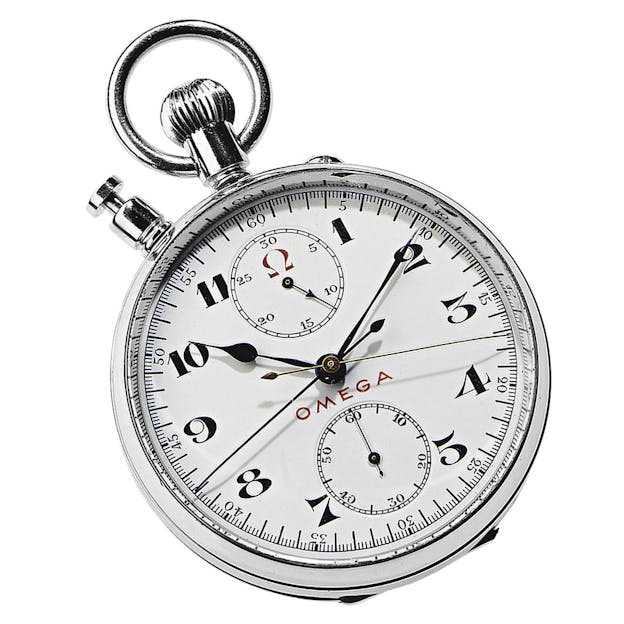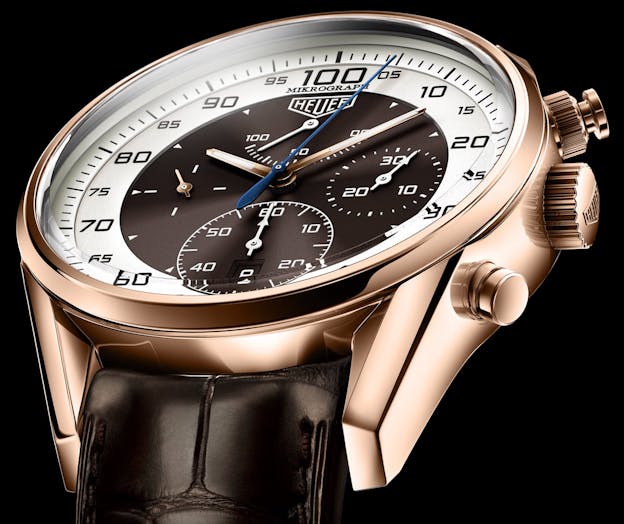It’s Almost Time For The Olympics. Can Your Reflexes Measure Up To Your Chronograph?
“It’s all in the reflexes.” Jack Burton, Big Trouble In Little China
We all find different ways of amusing ourselves when we watch the Olympics. One of mine is to try and watch sports which are on the obscure side, like flag football. In the past, some even more niche sports have gone on and off the roster, including, for one brief shining moment, pistol dueling, which involved competitors shooting at each other with wax bullets; as one of my sons commented laconically, “you could still take someone’s eye out with that.” I suppose it is no stranger than fencing, which is a polite form of sword dueling. Another more watch enthusiast-specific pastime is to wear a chronograph – a Speedmaster, why not, after all Omega is (and don’t you forget it) the official timing partner of the Games – and measure timed events.

Here one has many options as beating someone else’s time is how you win at the majority of Olympic sports. I have not tried this terribly systematically although I have noticed that as a general rule I am off by at least a half second from the official time, which is unsurprising given the technology at play. It is not uncommon for events to be measured to hundredths of a second and over the years, enormous amounts of energy have been exerted by companies who provide timing services at the Games, to take human judgement and therefore, human error, as much out of the equation as possible. The term “photo finish” refers to the use of high speed cameras in timing various sports – this happened at the Olympics, according to an article by The Horological Society Of New York’s Dr. Miranda Marraccini, in 1932, when the equipment consisted of a starting gun, a camera shooting at 128 frames per second, and an electronic clock controlled by a tuning fork – and ever since, the story of progress in timing sporting events may be termed, The Rise Of The Machines.

Omega slit aperture camera, and Magic Eye photoelectric apparatus, Olympics, 1948
However, if all we cared about were technical supremacy, we would not be interested in mechanical horology at all, nor indeed in the pitting, however Quixotic, of Man against Machine (which really, nowadays, seems more relevant than ever, especially if you write for a living). And so often the discourse about chronographs has to do with their “resolution” as we fundamentally un-technical watch enthusiasts like to put it (when you spend a lot of your time writing and thinking about obsolete technology you take your hifalutin’ technical terminology where you can get it. Ask the man who knows). The assertions as you, me, and all the boys down at the VFW have heard it, is that the faster the oscillator, the more precise the chronograph. We therefore esteem a chronograph that can divide a second into tenths, more than we esteem one that can dived a second into fifths. And if you really want bragging rights of course, you can find chronographs which can divide the second into even finer increments – hundredths of a second (or maybe not) and even, one one-thousandths of a second (which as they sing in Oklahoma, is about as high as a building oughtta go).

The problem is that human reaction time is a lot slower than one millisecond – in fact it’s slower than one one-hundredth of a second. How slow depends on what source you consult. I have seen figures that say reaction time can be as slow as 250 milliseconds, however reaction time is not fixed and varies from person to person and situation to situation. Still, for the average Joe, roughly a quarter second may be a reasonable figure. This means of course that not only is a micro or millisecond chronograph not particularly superior in practical terms, it also means that you’re pushing it to realistically take advantage of even a 1/10/second chrono like the El Primero.

A highly trained individual may however be able to handily improve on the 200-250 millisecond figure. For research purposes, let’s look at how a false start is defined in track events. When a runner goes off the block should be determined by the starter’s pistol. These are worth a story in themselves. There are numerous possible irregularities in using an audible signal to start a race. Sound at sea level travels at about 3 milliseconds which means that the sound of the gun reaches runners furthest from the pistol, measurably later than it reaches those closest to it. For this reason, an electronic sensor on the gun is used which transmits the sound of the shot (usually simulated nowadays) to loudspeakers behind each runner.
In order for a runner to start, they must hear the sound and react to it, which means that if they get off the block faster than the minimum human muscular reaction time to the signal, they have started early. An early start is defined by the IAAF – the International Amateur Athletic Federation, which is the governing body for track and field – as occurring whenever an athlete leaves the starting block one tenth of a second or less, after the starting gun is fired. The rationale is that if you leave the block that soon after the signal, you cannot be responding to the signal because not enough time has elapsed for you to genuinely react – you have, as the saying goes, jumped the gun.
A tenth of a second is 100 milliseconds – if ordinarily humans can’t approach this fast a reaction time, it is probably because we are talking about a group of individuals who are genetically selected for reaction time on the high end, and who moreover are then trained to react in as little time as possible to the signal. However, there is an ongoing discussion about whether or not this number should be revised, as at least in some instances, humans can apparently react faster than 100 milliseconds. The IAAF Sprint Start Research Project says, “The authors found great variation in individual reaction times and confirmed previous reports of simple auditory reactions as fast as 80ms. They recommend that the 100ms limit be lowered to 80 or 85ms and that the IAAF urgently examines possibilities for detecting false starts kinematically, so that judges’ decisions are based on the first visible movement regardless of the body part.”

Those of you who believe that you really can take advantage of the resolution of your El Primeros, TAG Mikrographs, and Journe Centigraphes may therefore be correct, at least in part. The neurology of such fast reflex times in sports is interesting to explore and may vary (maybe a lot) depending on the situation as well. Chronographs were historically often used to time events when a start signal (a gun) was audible and when crossing the line was perceived visually, as in a footrace; the neural pathways involve both visual and auditory processing in the optical and auditory pathways, different processing centers in the brain itself, and different reflex pathways in both the cerebellum and in sensory and motor nerve pathways. In a larger sense, establishing for certain that there is anything like a common upper limit to human reflex speed is a complex problem, unlikely to be explored specifically in the context of mechanical chronographs (which introduce their own variations, including but not limited to the speed with which the clutch system engages the chronograph). If by the way you want to get a sense of your own reaction time, have at it.
If you really want to drive yourself bananas you can wonder about how much imprecision variations in watch oscillator frequencies introduce, especially when timing longer events – if you are using a chronograph to time an event which takes 24 hours (like the Rolex 24 Hours Of Daytona, or Le Mans) and your watch is COSC certified, this means that there is -4/+6 seconds per day possible variation – up to ten seconds total, which absolutely swamps any variations due to millisecond reflex response time.
Modern sports timing is a sophisticated modern science, but high frequency chronographs, if you ask me, are still interesting in themselves for what they represent in history, and horological engineering; as always in mechanical watchmaking, it’s as much about how you do it, as it is about what you do. And human performance is full of surprises. Flies process visual images ten times faster than humans, but we still nail the little devils with flyswatters once in a while.

